
Independent journalist Jordan Flaherty was in New Orleans in 2005 when Hurricane Katrina first hit, and both supported and reported on relief efforts in the aftermath of the storm. Flaherty explains how Katrina’s devastation to the city’s infrastructure accelerated the existing dispossession of its primarily Black residents, how corruption and mismanagement in the years following the storm diverted aid, and how racist media narratives contribute to the ongoing criminalization of Black New Orleanians. “It’s devastating,” says Flaherty, warning that the aftermath of Katrina is not only reverberating, but amplifying, today. “The support for the oil and gas industry, the heightened climate change, hurricanes getting bigger, hurricanes getting stronger, less land to protect us in the city, less infrastructure to support us, less of a social safety net … less ways to afford to live in the city, in this country.”
Transcript
NERMEEN SHAIKH: This is Democracy Now!, democracynow.org. I’m Nermeen Shaikh in New York, with Amy Goodman in Telluride, Colorado.
We’re continuing our coverage of the 20th anniversary of Hurricane Katrina, the 2005 storm that devastated the Gulf Coast, killing more than 1,800 people and forcing over a million people to evacuate.
AMY GOODMAN: We’re joined now in New Orleans by independent journalist Jordan Flaherty, who was in New Orleans when the hurricane hit, returned to the city soon after being evacuated, to help with relief efforts and to report on what was happening in the streets, particularly to the poor Black communities that were most affected by the hurricane. He’s won awards for his reporting on people left behind in the New Orleans city jail after the hurricane and is the author of Floodlines: Community and Resistance from Katrina to the Jena Six. He’s joined us many times over the years.
I was just with you, Jordan, in New Orleans at Netroots Nation, where you moderated a panel on Hurricane Katrina, 20 years later. Can you speak now about the aftermath? Talk about what was happening then, from the lack — complete lack of FEMA preparedness or the city’s preparedness, to climate change, to what happened to this population, where more than — well, close to 2,000 people died, and 100,000 were evacuated?
JORDAN FLAHERTY: Thank you, Amy.
And sitting here in this chair, I think about all the people that aren’t in this chair, as you say, the people that were displaced, the people that were killed. New Orleans right now has a population of about 360,000. Pre-Katrina, it was about 480,000. And most of that is Black residents. The city has about 120,000 fewer Black residents than it did pre-Katrina.
And that period right after the storm, it feels a lot like right now, the way right now we’re feeling attacks on everything, on democracy, on the social safety net. That’s how it felt after Katrina. We were facing the issues people face everywhere — housing, education, criminal justice — but it was like on hyperspeed. Overnight, you had 80% of the city — of the city’s housing, you know, unlivable. You had the entire public housing infrastructure shut down. Almost all the public housing was shut down, even that that was undamaged. You had our free city hospital was closed down. The entire staff of the school system was fired overnight, 7,500 teachers. The largest union in the city, that union representing the teachers, ceased to be recognized. The schools were moved from control of the school board, so under electoral control, to a mostly charter system. You had the governor say, “I’m sending in National Guard troops. They’re locked and loaded. They’ve been trained to shoot to kill, and I expect they will.”
And the voices of especially Black New Orleanians were not heard. I know that you’ve lifted up voices like Norris Henderson, Monique Harden, Tracie Washington, Sunni Patterson, people that were on the frontlines of this struggle, artists, organizers, scholars, a incredible landscape of people fighting for the city. And people won real victories in that struggle. And, you know, it’s hard living in the city, but I’ve learned so much from the grassroots organizers on the frontline that were fighting for justice for this city.
NERMEEN SHAIKH: And, Jordan, could you talk about what happened with the domestic — the federal funding that was given to New Orleans in the aftermath of Katrina, more than $140 billion, which is the largest post-disaster domestic recovery effort in U.S. history? What happened to that funding?
JORDAN FLAHERTY: You know, it felt in that period as if, like, the sky was filled with money, as you say, all this money that came from the government and also from people that were donating. It was like it flew over our heads and then got redirected, so we didn’t actually get to — the people most in need didn’t actually receive it. So much of that money went to the Bush cronies, like Kellogg Brown & Root and Halliburton. Of the 25 nonprofits that received the most money for Gulf Coast aid, half of them were based outside of the Gulf Coast. There was all of people giving money, the government giving money.
If you look at the Louisiana Road Home Program, which was state-administered — state-administered and federally funded, one of the biggest sources of funding, it just went to homeowners, which were certainly in need. But what about renters? What about the homeless? And even among homeowners, white homeowners got 35% more aid, on average, than Black homeowners.
So, the people most in need, the people that were most highly victimized, the neighborhoods that were most in need received the least aid. And much of that aid that was allocated, it took years to come through, some of it through mismanagement, other reasons. Some of that money still has not come.
AMY GOODMAN: You know, the criminalization of storm survivors — on the one hand, they’re left to drown. Eighteen hundred people died in Hurricane Katrina. When did the federal authorities come out? How were the people who were so desperate, as thousands went into the Convention Center, into the Superdome — how were they seen? We just saw excerpts of our coverage, where people were talking about Black people described as looters, white people described as desperately trying to find food for their families. The National Guard coming out, being told to shoot to kill. Describe that whole scene, including the Danziger Bridge, that famous incident, attack by police.
JORDAN FLAHERTY: Danziger Bridge, it’s hard to even talk about. You know, these police came rolling up to a group of unarmed civilians. We found out later that the police thought that they were coming onto another scene. And they just started — they just started shooting to kill. James Brissette, 17 years old, killed by police. Ronald Madison, mentally challenged man, killed. Others that were there, wounded. The police just went up, opened fire.
And it was years before that story was even told by most of the media. It was mostly ignored. And when it was ignored — and when it wasn’t ignored, they just told the police’s end of the story. It was finally in 2008 that we really had some federal investigations of police violence in that period after the storm. But for years, our media failed to investigate.
And historically, New Orleans media has failed to investigate issues in the Black community, issues of police violence. New Orleans Times-Picayune, that was once our daily paper here, did not cover these stories, did not care about these stories. We saw it over and over and over again. Many of the people working in that paper were closer to police than they were to community members. One photographer testified that he knew things about police behavior that he didn’t report at the time. They did not do their responsibility to tell the story, and, as I said before, the voices of Black New Orleanians were not heard.
The people who created the culture that we feel in this whole world, the music of New Orleans, the culture, they’re still living here. Their voices are not heard. People are working for minimum-wage jobs or less. They are living in a city with poor infrastructure. You know that if you live here, you will live in an amazing place, but also you’ll probably die sooner. You’ll probably make less money. You’ll probably have less educational opportunities. Several years ago, it was reported that one of the ZIP codes in New Orleans had a life expectancy of 55 years. We live right near Cancer Alley, where the chemical processing plants cause high cancer rates, especially in that area and also right near here.
Those same oil and gas companies are responsible for coastal erosion. We’re losing, for years, it’s been estimated, about a football field of land every 45 minutes, this coastal erosion, much of that caused by the oil and gas pipelines that bring the saltwater into the freshwater marshes. That makes us more vulnerable to hurricanes. Of course, climate change makes us more vulnerable. And this current administration is doing everything to make us more vulnerable, including, as you’ve recently reported, gutting FEMA once again.
NERMEEN SHAIKH: And talk about the significance of that, Jordan. I mean, as Malik Rahim, who Amy Goodman spoke to, as he said, and you’ve just repeated, that something like Katrina could happen very easily again. And specifically these cuts to FEMA, because poor, climate-vulnerable states like Louisiana received the most dollar assistance — direct assistance, sorry — direct assistance from FEMA between January 2015 — that is, so, almost 10 years after Hurricane Katrina — between January 2015 and April 2024. So, what will this mean for the city and for the state?
JORDAN FLAHERTY: It’s devastating. It’s devastating. The support for the oil and gas industry, the heightened climate change, hurricanes getting bigger, hurricanes getting stronger, less land to protect us in the city, less infrastructure to support us, less of a social safety net, less medical, a huge increase in policing.
You know, one of the victories that organizers won here after Hurricane Katrina was shrinking the size of the city jail, was getting oversight over — federal oversight over the police department, also an independent police monitor, federal oversight over the jail. All of those kind of things are going out the window. Our new governor is pushing to undo decades of reform of the — of policing, of the prison-industrial complex in the state, more people getting locked up, more people being criminalized, less ways to afford to live in this city, in this country.
AMY GOODMAN: Jordan, before we go, I’m just interrupting because we have less than a minute. Talk about the prisoners, people held in the parish jails, what they faced at that time, often just awaiting trial, stuck in the dark, in the filth.
JORDAN FLAHERTY: Right. We’re talking about many people who had just been arrested a day or two before for some minor charge, like public drunkenness. The city jail, before Katrina, was the largest city jail in the country, 7,000 people being held there. The New Orleans police were arresting 60,000 people every year. That’s in a city of less than 500,000 people. Do the math on that. You had 95% of those arrested were arrested for nonviolent offenses.
When the floodwaters were rising, people were left to die. When they finally were rescued, they were shipped to maximum-security prisons around the state, like Angola state prison. Many people were lost in the system for months. I remember, nearly a year later, advocates found a woman who had been lost in the system. She didn’t even know why she had been arrested.
NERMEEN SHAIKH: Jordan, I’m afraid we’re going to have to leave it there, but we will continue covering the 20-year anniversary of Hurricane Katrina tomorrow. Thanks so much for joining us, Jordan Flaherty, New Orleans-based independent journalist and film producer, author of Floodlines. Thanks so much for joining us. More of our coverage tomorrow.
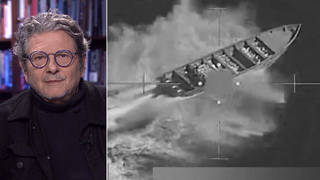
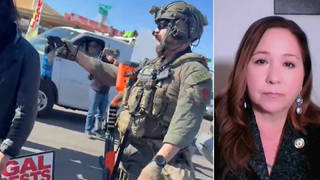
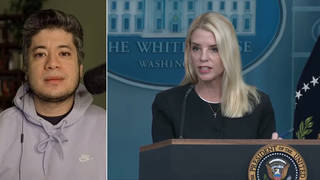
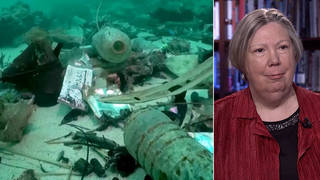

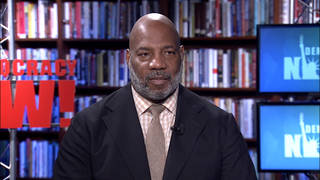
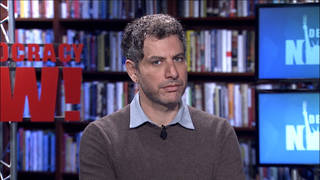
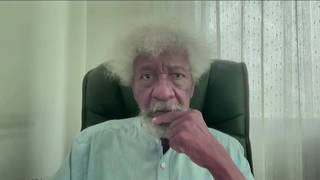
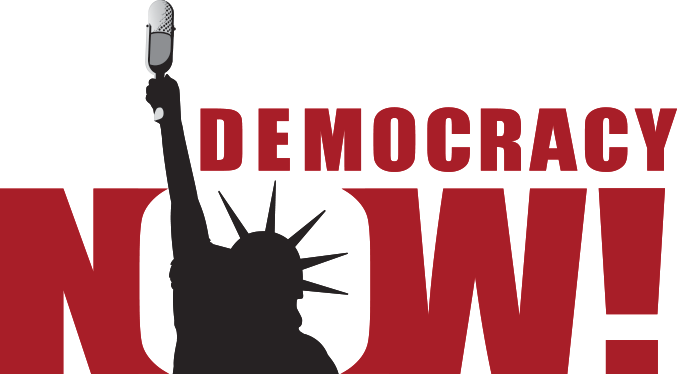
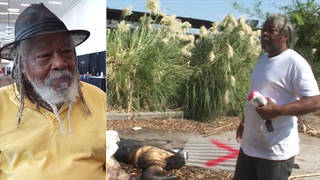
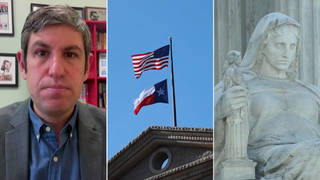
Media Options